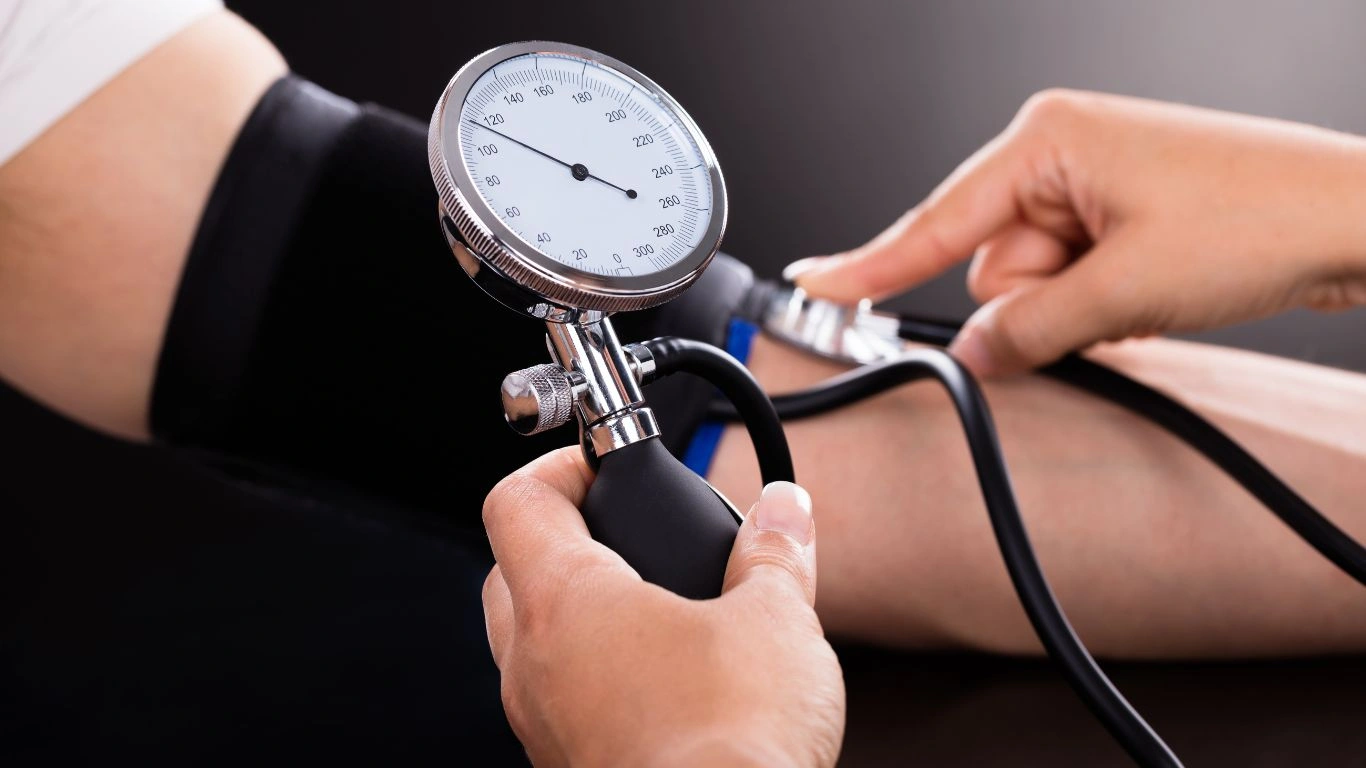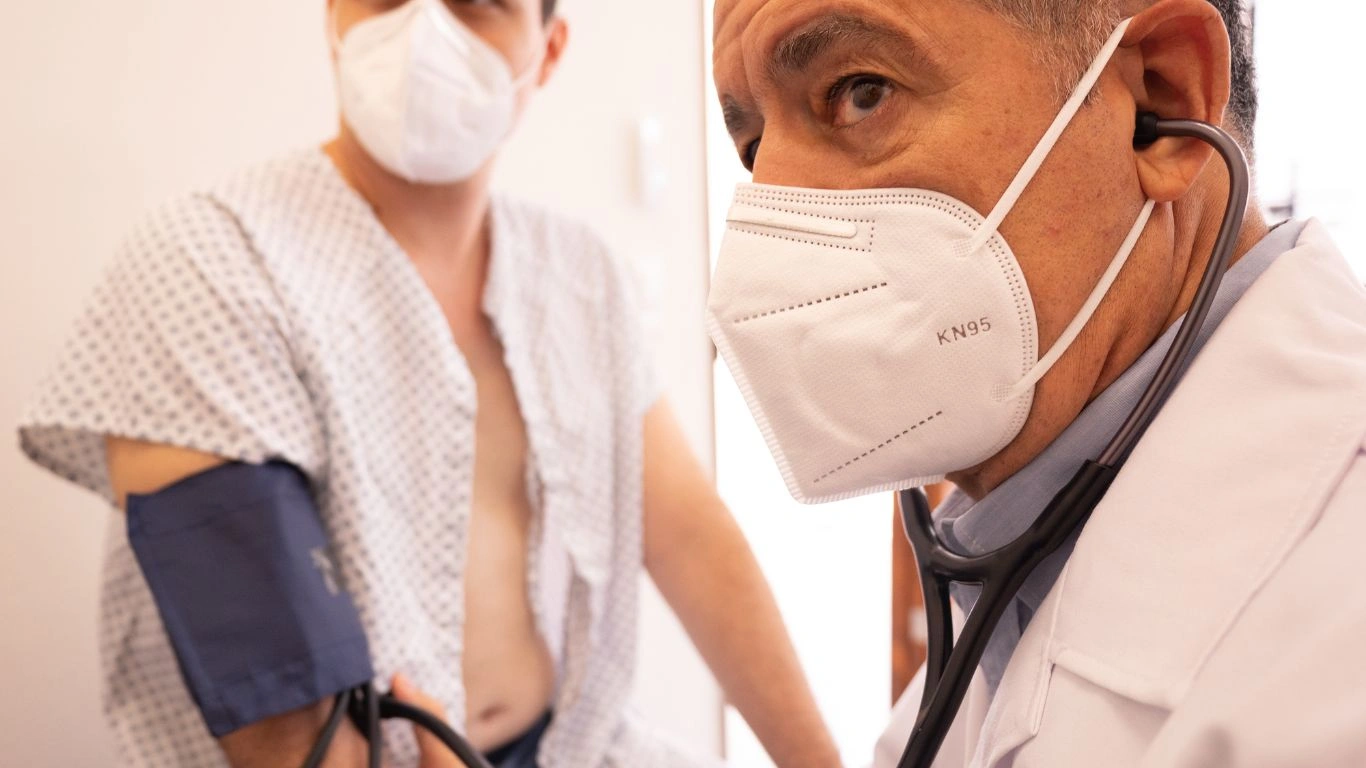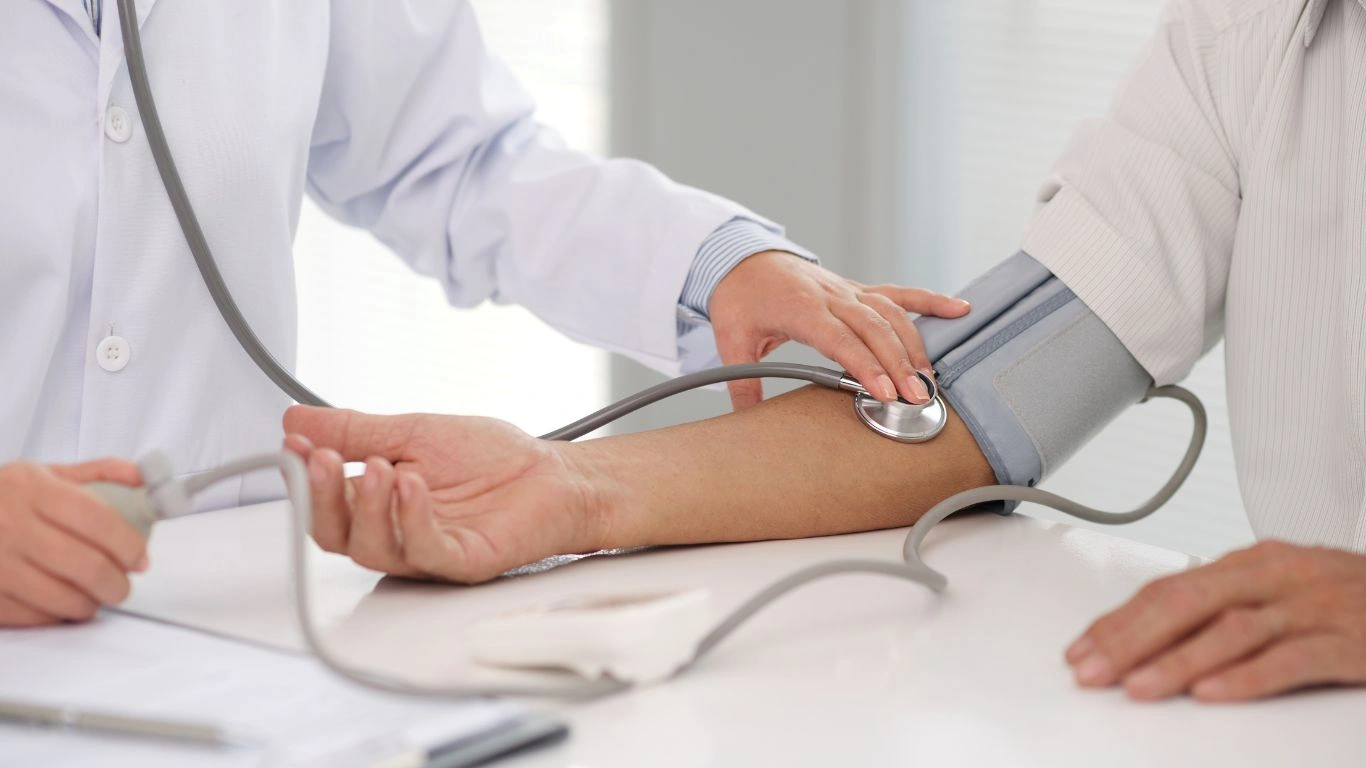The Impact of Air Travel on Hypertension: Essential Tips for Control
As an Internal Medicine Physician specializing in hypertension management, I’ve seen my fair share of patient concerns about air travel. It’s something that many of us take for granted, but for people with high blood pressure, there are unique challenges that can make flying a bit more complicated. The impact of air travel on hypertension is often underestimated, yet it can significantly influence blood pressure control. Whether you’re a frequent flyer or just planning a holiday, understanding how air travel affects hypertension is crucial to maintaining your health and avoiding unnecessary risks. In this article, I’ll break down how flying can influence your blood pressure, share tips from my own experience, and offer insights on how to manage your hypertension effectively when you’re on the move.
Understanding Hypertension and How It Can Affect You During Air Travel
Hypertension, also known as high blood pressure, is a condition where the force of the blood against the walls of your arteries is consistently too high. This can lead to serious complications like heart disease, stroke, and kidney damage if left untreated. For individuals already managing hypertension, air travel can create a variety of factors that might exacerbate the condition. Let’s take a closer look at some of the key elements of air travel that can impact your blood pressure.
How Cabin Pressure and Altitude Affect Hypertension

One of the most immediate factors that affect blood pressure during air travel is cabin pressure. The air pressure inside an airplane is much lower than at sea level, which means your body has to work harder to get the oxygen it needs. This can lead to an increase in heart rate and, consequently, blood pressure. As a result, passengers who already have hypertension may experience temporary spikes in blood pressure during flight, particularly if they are seated in areas of the plane with lower air pressure, such as near the rear or top.
When you’re up in the air, oxygen levels decrease, which can make it harder for your body to stay properly oxygenated. This oxygen deprivation can be a stressor for people with hypertension, causing an increase in vascular resistance (the pressure your heart has to work against), which might push your blood pressure higher. If you have a history of cardiovascular issues or poorly controlled hypertension, these changes in pressure can be particularly concerning.
The Effect of Dehydration and Dry Air in the Cabin

Another critical factor that plays a role in hypertension management while flying is dehydration. Airplane cabins are notoriously dry, with humidity levels often dropping below 20%. This dry air can lead to dehydration, which is a key risk factor for high blood pressure. Dehydration can cause the blood to become thicker, making it harder for your heart to pump efficiently, which in turn can increase your blood pressure. When you’re dehydrated, your body compensates by releasing stress hormones like adrenaline, which further contributes to a rise in blood pressure.
If you have high blood pressure, staying hydrated during your flight is essential. Drinking plenty of water throughout the flight helps keep your blood flowing smoothly and prevents any unnecessary spikes in blood pressure. It’s also important to avoid excessive caffeine and alcohol, which can both contribute to dehydration and worsen hypertension.
Stress and Anxiety: The Psychological Impact of Flying on Hypertension

Aside from the physiological factors, there’s also the psychological aspect of flying that can have an impact on hypertension. For many, the experience of flying can be stressful, whether it’s dealing with airport security, the fear of flying itself, or the overall hustle and bustle of travel. This stress can trigger the “fight or flight” response, which involves the release of stress hormones like cortisol and adrenaline. These hormones increase heart rate and constrict blood vessels, causing an increase in blood pressure. If you’re already dealing with hypertension, this added stress can be a trigger for dangerous spikes in your blood pressure levels.
In my clinical experience, I’ve had patients express anxiety about flying due to concerns about their blood pressure and the potential for it to rise during travel. This stress can sometimes create a vicious cycle where the fear of elevated blood pressure while flying causes anxiety, which in turn causes further increases in blood pressure. Recognizing this psychological aspect and managing stress is crucial for those with hypertension. It’s important to practice relaxation techniques, such as deep breathing, mindfulness, or even listening to calming music, to help reduce anxiety levels during your flight.
Practical Tips for Managing Hypertension While Flying
Now that we’ve covered the physiological and psychological factors involved, here are some practical tips to help you manage your hypertension when you’re flying:
- Stay Hydrated: Drink plenty of water before, during, and after your flight. Avoid alcohol and caffeine, as these can lead to dehydration and worsen hypertension.
- Monitor Your Blood Pressure: If you have a portable blood pressure monitor, bring it with you to check your blood pressure before and after your flight.
- Take Your Medications: Make sure to bring any medications with you in your carry-on bag, and set reminders to take them as prescribed. If you’re traveling across time zones, adjust the timing of your doses accordingly.
- Practice Stress Management: Try relaxation techniques such as deep breathing exercises, meditation, or listening to calming music to help manage anxiety before and during the flight.
- Wear Compression Socks: Consider wearing compression socks to help improve circulation and reduce the risk of deep vein thrombosis (DVT), which can be more likely on long flights.
By following these tips, you can help minimize the risks of air travel when managing hypertension and enjoy a safer, more comfortable journey. It’s all about preparation and understanding how air travel affects your body. In the next part of this article, I’ll dive deeper into how long flights, travel across time zones, and other factors can complicate hypertension management during air travel. But for now, I hope this helps you get a better grasp on the key aspects of managing your blood pressure while flying!
The Impact of Long Flights on Hypertension Control

Long-haul flights present a unique set of challenges when it comes to managing hypertension. When you’re in the air for extended periods—say, over 6-8 hours—the effects on your body are amplified. As an Internal Medicine Physician, I’ve worked with several patients who’ve had difficulty managing their blood pressure during these long stretches of time, and I’ve noticed some common patterns.
One of the main issues with long flights is that prolonged sitting can lead to poor circulation. When you’re seated for hours at a time, especially in cramped conditions, blood doesn’t circulate as efficiently throughout your body. For someone with hypertension, this can lead to increased vascular resistance and pressure on the heart. Your body might struggle to maintain normal circulation, and this can cause your blood pressure to spike, especially in the absence of regular movement.
Additionally, the lack of movement on a long flight can increase the risk of deep vein thrombosis (DVT), which is when blood clots form in your legs. This is a serious concern for people with high blood pressure because it further strains your cardiovascular system. To reduce the risk of DVT and help manage blood pressure, I always recommend passengers with hypertension get up and stretch or walk every couple of hours. Even small leg stretches at your seat can help with circulation.
The Role of Time Zones: How Traveling Across Time Zones Can Affect Blood Pressure

Changing time zones adds another layer of complexity to managing hypertension during travel. If you’re crossing multiple time zones, your body’s circadian rhythm—your internal clock—gets disrupted. This disruption can lead to sleep disturbances, jet lag, and additional stress on your system, which in turn can affect your blood pressure.
For someone with hypertension, sleep is crucial in maintaining stable blood pressure levels. Poor sleep or not enough rest can cause the body to produce more stress hormones, leading to an increase in blood pressure. It’s not uncommon for patients to experience fluctuations in blood pressure when they’re traveling to new time zones, especially when they’re adjusting to a new schedule. One of the main tips I give my patients who travel frequently is to adjust to the new time zone gradually by shifting their sleep and meal schedule a couple of days before departure.
Another important consideration when traveling across time zones is the timing of your medications. If you take medication to control your hypertension, it’s essential to adjust the timing to match your new time zone. I always encourage my patients to set up a medication schedule based on the local time of their destination to avoid missing doses. If needed, discuss with your healthcare provider how best to adjust your regimen based on the time changes.
The Role of Stress and Anxiety on Long Flights

Stress can be an even bigger factor during long flights, especially if you’re already dealing with a stressful travel situation. Whether it’s flight delays, cramped seats, or the stress of navigating airports, these factors can elevate anxiety levels. In my practice, I’ve seen patients whose blood pressure rises simply due to the stress of flying, even if they’re physically healthy otherwise. This can be particularly challenging for those with hypertension, as it can cause additional strain on the heart and cardiovascular system.
Managing stress while traveling is key to keeping your blood pressure in check. Personally, I’ve found that being proactive about preparing for a trip—such as planning ahead, packing early, and allowing plenty of time to get to the airport—can reduce the stress of travel. Additionally, practicing relaxation techniques like deep breathing, guided meditation, or even using noise-canceling headphones to block out external noise can help manage anxiety during the flight.
It’s also worth noting that if you tend to experience stress and anxiety more acutely on flights, it may be helpful to have a conversation with your doctor about coping mechanisms. There are various strategies available, from cognitive-behavioral therapy (CBT) to medication that can assist in managing stress during travel. Don’t hesitate to seek professional advice if you feel that anxiety is having a significant impact on your hypertension while traveling.
Tips for Coping with Air Travel if You Have Hypertension
Now that we’ve discussed some of the challenges air travel presents for individuals with hypertension, let’s dive into some practical tips that can help you manage your blood pressure more effectively. Based on my experience with patients who have hypertension, I’ve put together a list of strategies that I highly recommend for anyone traveling by air.
- Wear Comfortable Clothing: Tight clothing can impede circulation and contribute to higher blood pressure, especially during a long flight. Opt for loose, breathable clothing to promote blood flow.
- Don’t Skip Meals: Skipping meals or eating irregularly can cause blood sugar dips and spikes, which in turn can affect your blood pressure. Eat balanced meals and snacks throughout the day to maintain stable blood pressure levels.
- Move Regularly: As mentioned before, getting up and walking around every couple of hours can help prevent DVT and improve circulation. If you’re not able to get up, do simple leg exercises while seated, like rotating your ankles or flexing your feet.
- Control Your Breathing: Practicing slow, deep breathing can help activate the parasympathetic nervous system, which helps calm your body and reduce blood pressure. Consider doing deep breathing exercises while in your seat.
- Avoid Salt: Excessive salt can cause fluid retention, which can increase blood pressure. Avoid salty snacks during the flight and choose healthier, lower-sodium options if available.
These tips are simple but effective ways to keep your hypertension in check while flying. By being proactive and planning ahead, you can minimize the risks associated with air travel and enjoy a smoother journey. In the next section, I’ll continue to explore other practical advice on managing hypertension while flying, as well as more insights into how to prepare for specific travel scenarios.
Adjusting Your Hypertension Management Strategy for Air Travel

Managing hypertension effectively is all about consistency and being proactive. This becomes even more important when you’re preparing for a flight. From my own experience, I’ve learned that small adjustments to your routine can make a world of difference when it comes to keeping your blood pressure stable while flying. In this section, I’ll walk you through some essential adjustments that will help you manage your hypertension throughout your trip.
Prioritize Your Medication Routine
One of the first things I stress to my patients is the importance of maintaining their medication routine, especially when they’re traveling. In my practice, I often see individuals forget to take their blood pressure medications on time due to the chaos of travel. When you’re traveling, whether for business or pleasure, it’s easy to get caught up in the moment, but skipping doses can result in a spike in blood pressure and undo all your hard work in managing it.
If you’re crossing time zones, you’ll need to adjust the timing of your medications. This doesn’t have to be complicated. I always recommend setting up a medication schedule that syncs with your new location’s time zone. Use a pillbox organizer or a medication reminder app to ensure you take your medications as scheduled. If you’re unsure how to make adjustments, it’s always a good idea to talk to your doctor or pharmacist beforehand for guidance.
Stay Mindful of Your Diet While Traveling
Your diet plays a massive role in controlling hypertension, especially when you’re traveling. Air travel, with all its temptations, can sometimes lead to unhealthy food choices. We’ve all been there: a quick snack from the airport kiosk, the tempting in-flight meal, or the salty pretzels handed out during the flight. But for people with high blood pressure, these seemingly harmless choices can add up quickly.
When traveling, it’s essential to keep your diet as healthy as possible. I always tell my patients to plan ahead by packing heart-healthy snacks—things like nuts, seeds, fresh fruit, or whole-grain crackers. If you’re traveling internationally, try to familiarize yourself with local food options before you leave, so you can make better choices when you’re on the go.
Also, don’t forget about sodium! Most processed or packaged foods, including those available at airports, are loaded with sodium, which can cause your blood pressure to rise. As someone managing hypertension, you’ll want to keep your sodium intake as low as possible. Opt for fresh options and avoid the temptation to snack on overly salted items. You might even consider carrying a small, portable salt substitute for seasoning if you feel the need to flavor your food.
Dealing with Anxiety and Stress During Air Travel

Another important aspect of traveling with hypertension is handling stress and anxiety—something I’ve encountered often in my practice. Flying can be stressful for many people, but if you already have hypertension, stress can make things worse. Whether it’s the thought of flying, airport crowds, or the chaos of travel, stress is a major contributor to blood pressure spikes.
Managing your stress is absolutely vital during air travel. One of the strategies I recommend is practicing mindfulness techniques before and during your flight. Meditation, deep breathing exercises, or even simple visualization techniques can significantly lower stress levels. I also recommend downloading a few guided meditation apps, which can help you stay calm if you feel your anxiety levels rising.
If you’re a nervous flyer, you may also want to try some cognitive behavioral therapy (CBT) techniques to help manage your fear of flying. I’ve seen patients experience a significant reduction in flight-related anxiety when they incorporate these practices into their routine. Additionally, if stress is a constant problem for you while traveling, consider talking to your doctor about stress-reduction programs or medications that might help you cope during your flight.
Keep Moving: The Importance of Exercise During Travel
Exercise is another key factor in managing hypertension, and it doesn’t have to stop just because you’re flying. I’ve always encouraged my patients to maintain a level of physical activity even when they’re traveling. Long flights, in particular, can leave you sedentary for hours, and this lack of movement can contribute to both high blood pressure and other health issues, like blood clots or muscle stiffness.
So, what can you do to keep moving during your flight? If you’re flying on a long-haul flight, try to get up and walk around every 2-3 hours. Even walking to the restroom can help keep your blood circulating and prevent the negative effects of prolonged sitting. For those who prefer to stay in their seats, simple exercises like ankle rotations, leg lifts, or foot stretches can make a huge difference in circulation. I also recommend doing seated stretches for your arms, neck, and shoulders to avoid muscle tension.
When you land, get moving again as soon as you can. Taking a brisk walk through the airport or finding a quiet space for stretching can help reset your body after a long journey. Remember that keeping your body active is just as important for blood pressure management as taking your medication or eating a healthy diet.
References
Disclaimer
The information provided in this article is for informational purposes only and should not be construed as medical advice. Always consult with your healthcare provider before making any changes to your medication, diet, or exercise routine, especially when traveling. The content in this article is based on my personal experiences as an Internal Medicine Physician and is intended to provide general guidance on managing hypertension during air travel. Each individual’s medical needs are unique, and it’s important to consult your doctor for personalized advice tailored to your specific condition.

Dr. Gwenna Aazee is a board-certified Internal Medicine Physician with a special focus on hypertension management, chronic disease prevention, and patient education. With years of experience in both clinical practice and medical writing, she’s passionate about turning evidence-based medicine into accessible, actionable advice. Through her work at Healthusias.com, Dr. Aazee empowers readers to take charge of their health with confidence and clarity. Off the clock, she enjoys deep dives into nutrition research, long walks with her rescue pup, and simplifying medical jargon one article at a time.






